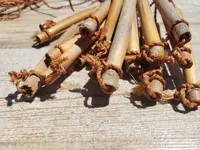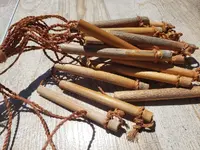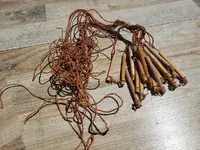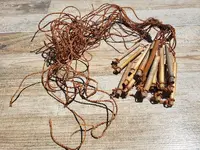PaleIO
Hero Member
- Joined
- Apr 1, 2020
- Messages
- 848
- Reaction score
- 1,982
- Golden Thread
- 0
- Location
- New Mexico
- Detector(s) used
- Minelab X-Terra 705
- Primary Interest:
- Relic Hunting
This is one of my favorites. This set of small game snares are made of yucca fiber rope with some hollow reed segments tied to the ends. These were found over 80 yrs ago here in New Mexico. I inherited them several years ago and was told they were found inside a small pot under a dry overhang overlooking a reliable spring. Many arrowheads came from this location also. They are well made and look like they could still be used with success today. I wish I could have been around to help dig them out...or better yet watch the original user set one.








Amazon Forum Fav 👍
Upvote
0



